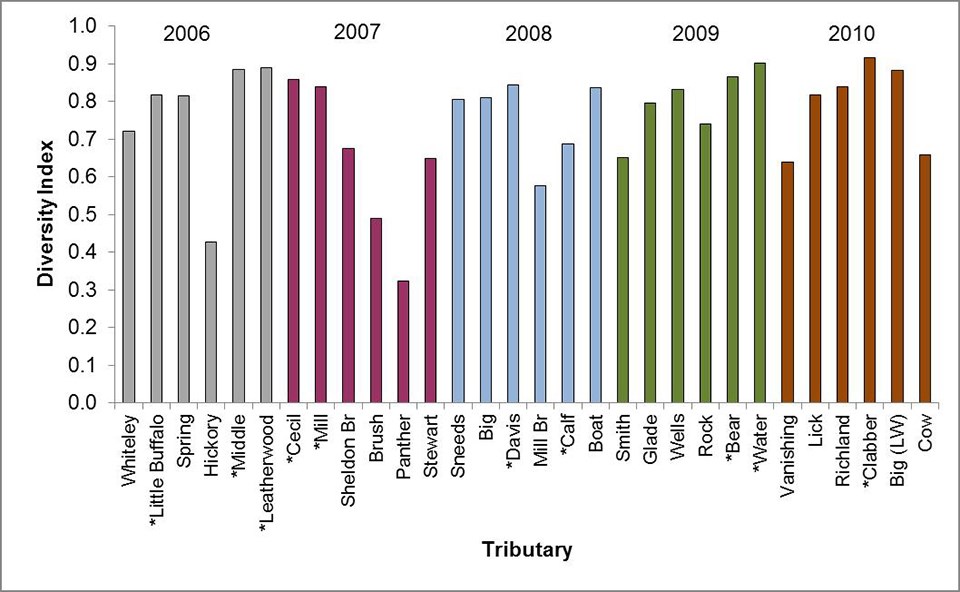Last updated: October 8, 2020
Article
Fish Communities at Buffalo National River

NPS-Photo
The Buffalo River is one of the few remaining free-flowing rivers in the United States. The park only encompasses 11% of the watershed. This leaves much of the watershed susceptible to human activities such as logging, agriculture, and urbanization. Many fish are sensitive and serve as indicators of stream health. Over time, land use changes can affect fish populations. As a result of habitat changes and a decline in water quality, many Midwestern fish species are at risk of population declines. The Buffalo River is considered a “hot spot” for at-risk fish. Many species, such as darters, sculpins, and madtoms, need pristine conditions to survive.
Scientists have been tracking fish populations in the Buffalo River and its tributaries since 2006. They collect fish by using electrofishing techniques. Tracking fish allows scientists to determine which species are in the park and how well they doing in the streams. Fish data is then related back to stream habitat and water quality conditions.

NPS
Learn more about the Heartland Inventory & Monitoring Network.
Data in this report were collected and analyzed using methods based on established, peer-reviewed protocols and were analyzed and interpreted within the guidelines of the protocols.
